
Last Updated on October 18, 2025
Every visitor that interacts with your website is painting a digital ‘picture’ of who they are as a shopper. With every interaction, each time they view a new product, click on a particular offer, add a product to their cart, go idle, abandon their purchases, etc., they’re telling you a little about themselves. This ‘digital body language’ can be listened to and worked on to improve the experience of users in your store.
This might sound complex and difficult to implement, but it is what essentially happens in every physical store as well. Here’s an example – an employee in an electronics store sees a customer struggling with two hair blowers. She is trying to compare the prices to decide which one to buy. The employee notices she is a student, a price-conscious consumer, and advice her to buy the option that offers the most features at the minimal price. Now, if you look at this from a business point of view – you read the customers’ body language and activity then responded appropriately to push them further into the buyer’s’ journey.
If you do this same thing for your e-commerce, can you guess what it is called? Behavioral targeting involves studying how users are interacting with your website, inferring their digital body language, matched along with their demographic profile (based on traffic segmentation) to deliver the most relevant experience.
What does ‘most relevant experience’ mean though? For the student looking for the cheapest hair blower, the right information about the cost vs benefits of her choices pushed her closer to make the purchase which she might not have made otherwise. Behavioral target marketing takes a similar approach for e-commerce businesses – by providing the right information at the right time, you can take care of the customer’s concerns and hesitations, making their experience more ‘personalized’ and relevant to their intent.
Well, it does and doesn’t. While those are a few of the tactics used for behavioral targeting, a lot more has to be said and done rather than simply listing out the ‘Your previously viewed items’. The possibilities of behavioral targeting are endless, and in this article, I’m going to share actionable approaches around the 3 pillars of behavioral marketing that get HUGE results, along with some great examples – so you get to pick the best ones for YOUR business. Addressing the users’ concerns, behavioral marketing 101.
Suggested Selling: Product Recommendations, Upsells, and All That Jazz
When done correctly, suggested selling is one of the most effective types of behavioral targeting. Here’s a chart which proves just that:
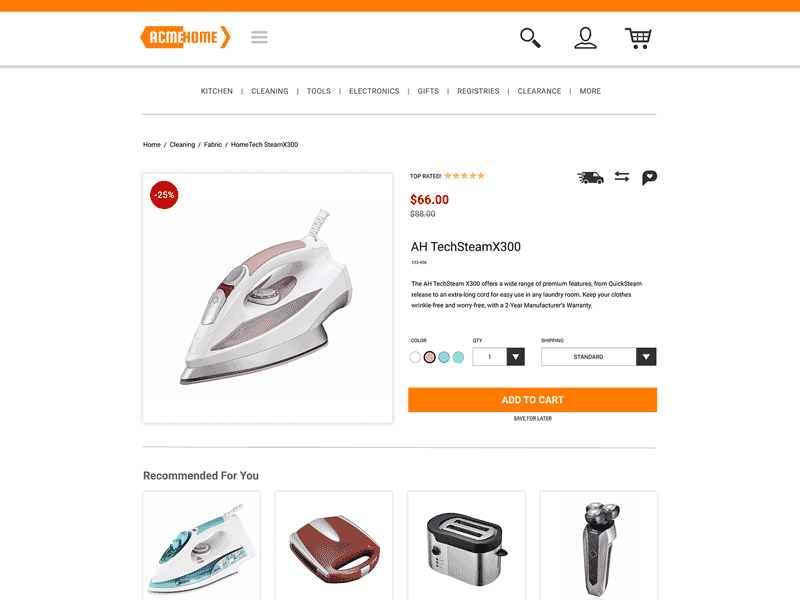
Before I jump in to tell you that you should show ‘recommended products’ to your users just because Amazon does so, let us dive in a little deeper. Implementing product recommendations on a superficial level in your business doesn’t help the user at all. In fact, it makes you sound like a pushy salesman who is trying to shove additional products into their cart when they’re not even decided on buying one. Does that sound like something Amazon would do to you? Of course not.
Here is Amazon’s secret to making product recommendations work – observe the human, not the data. While it is easier in physical stores, data is all that you have in e-commerce, so your task is to understand the human from the data, and make recommendations for the human. Let’s take an example to understand this better. You notice the following digital body language traits – Sharon navigates to the search bar and types in “steam iron”. She sorts by best reviews. On each product page, she hovers on technical details and product specifications for a healthy amount of time, then goes on to read reviews. She repeats this process for the top 10 results. Based on this activity, the behavioral marketing software can detect that Sharon is a “smart shopper”, that she wants to make sure she has all the information about her options so that she can make an informed decision. The ideal response for this kind of shopper would be something that helps them compare the prices and details of different options in front of them.
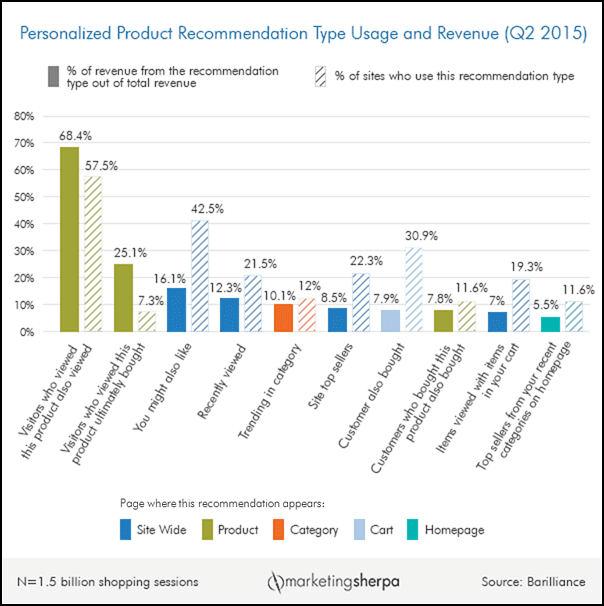
Sharon beamingly orders the iron of her liking after seeing this – can you guess why? Because you hit her with the right information at the right time. At this stage, showing Sharon recommendations of ironing boards that other people have purchased with the steam iron would be a bizarre response. It does not address her current hesitation. She does not even have a steam iron yet. This kind of a personalization effort would most likely piss her off.
Tracking and using the right type of data at the right time are the most important parts of suggested selling. UrbanOutfitters understood and used this well in their suggested selling campaign for cocktail dresses. They used location targeting to identify users from their core demographic who frequented nightclubs and bars. These users were shown notifications like the following:
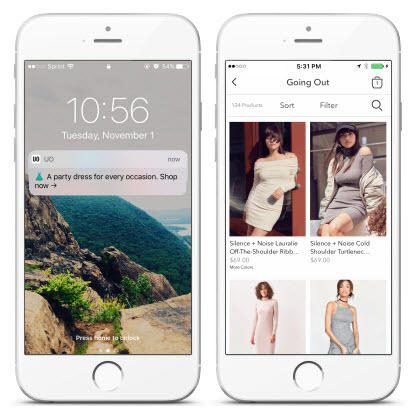
Again, by addressing the human being, things worked out well for UO. They boast of a 75% increase in conversions.
So what about Upselling and Cross-Selling? Are they applicable to all users?
NO, they aren’t applicable to 100% of your users. They won’t work on all of them. BUT, upselling and cross-selling target the two most common traits that we have while shopping and making buying decisions.
Upselling essentially appeals to the logical buyer within us. It’s a voice that says, ‘Hey, here’s a lot extra for a slight bump in the cost’, encouraging you to buy higher-end products at a comparable price.
Cross-Selling is built around answering the complementary needs which are unfulfilled by the original product. It is when you go to buy a new pair of sneakers and buy some socks along. It is when Sharon from our previous example is shown ironing boards once she has added a steam iron of her liking to her cart.
Based on the type of user and their behavior, upsells and cross-sells can be done on product pages (the calculated user), at checkout (for impulsive users), after the order has been placed (for risk-averse users), and so on. I won’t dive into comparing how upsells and cross-sells work at different stages, because it is unique for each business. The best way to find out works for you is to study your users, study your data, implement, and improvise. Here’s an example of both upselling and cross-selling at the product page of the Net-a-Porter store:
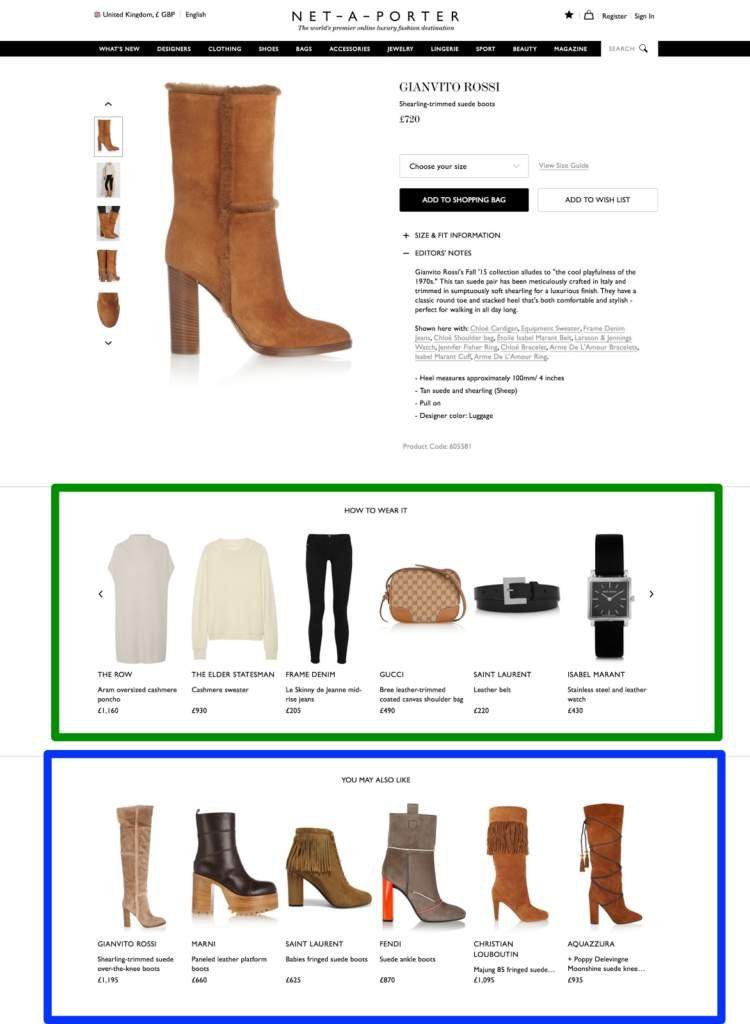
At an advanced level, these tactics can be further driven to be more personalized. For customers who are more inclined towards unique products and luxury experiences, you can step up the upsell experience by implementing product customization in your e-commerce. By putting the user in the creative seat, you increase their emotional investment in the product, which means greater chances of upsells. It also keeps them engaged over a long time. Here’s an example of the AllStarLogo.com store implementing customization using the Inkybay Product Customizer.
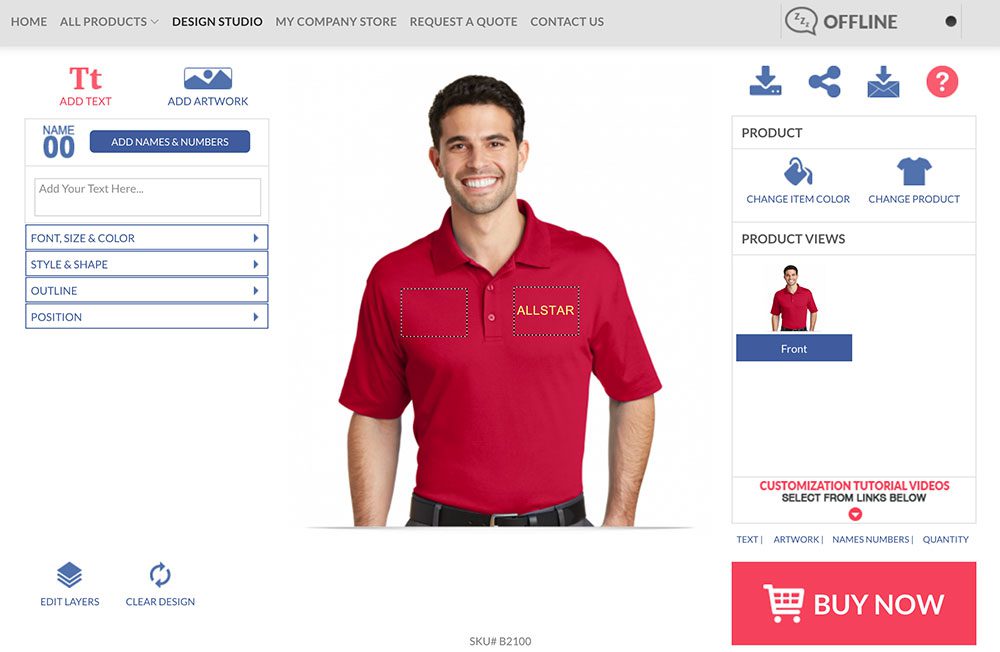
Similarly, you can make use of more behavioral data to increase the effectiveness of your cross-sells. For example, if the average order value for a particular type of customer is $300, the recommendations can be made on the basis of the current cart value to up close to the average cart value. Here’s an example:
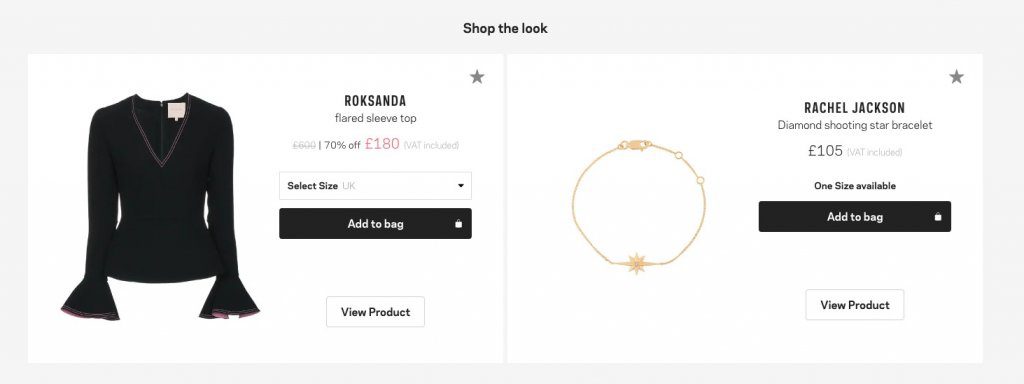
Now that you know it is more about the human, it is time to take bigger steps to help your users out in their shopping efforts. The next step in behavioral targeting is serving personalized content and offers, which is a discussion in itself. I will be talking about in the coming week, hang around for more!

